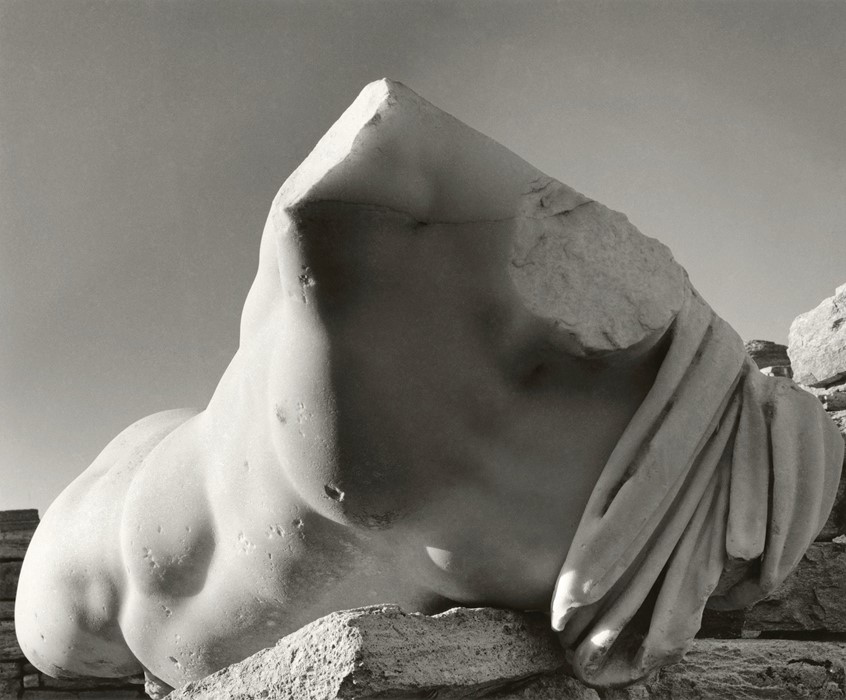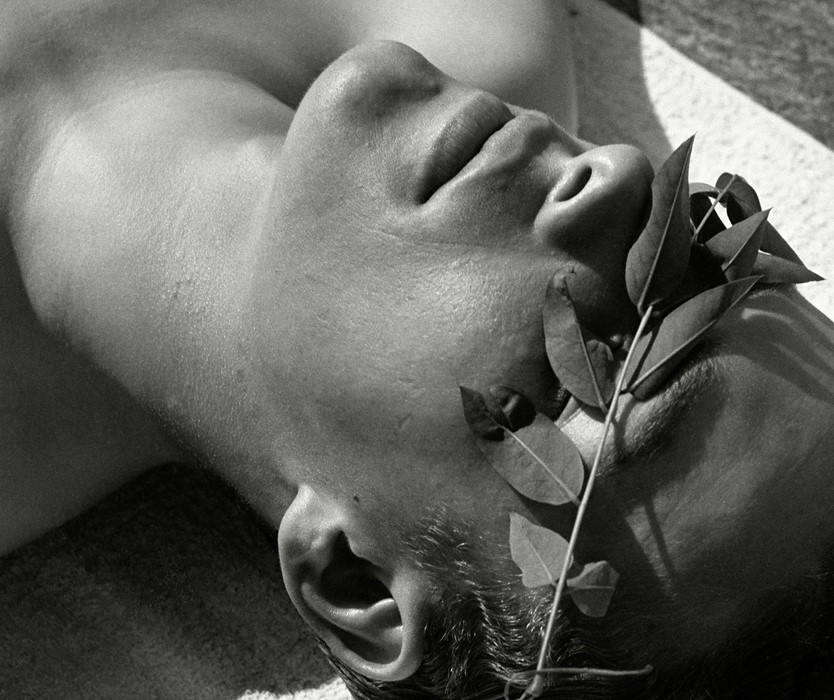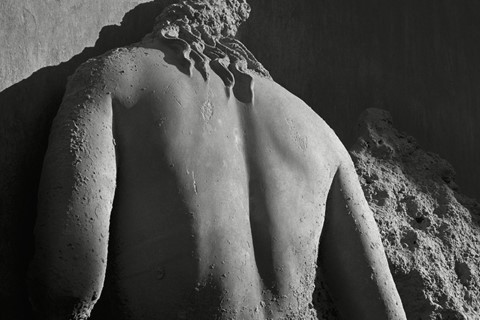An exhibition at Magnum Photos is dedicated to the German photographer’s images of Mediterranean vistas and young men, taken in the first half of the 20th century
A black and white photograph of a male torso in Magnum Photos’ new Herbert List exhibition, Metamorphoses, demands a few moments for consideration. The sun-washed form is without a head and indeed arms, with a fracture revealing the marble’s less familiar wavy formatione. Marble fractures like this are, in fact, a signifier of List’s subject: a sculpture of an ancient Greek soldier on the island of Delos in the Cyclades archipelago.
Another photograph also shows a stoic male figure, a young Greek boy lying under the sharp Mediterranean sun and covering his eyes with a gentle shrub. The magnitude List attributes to his subject is similar with the former image, but here, it renders the boy statuesque and unattainable. However, unlike the marble chill of the torso, the boy is made of flesh, warm and tanned under the afternoon heat. He is contemplative, eased by the refuge his nap offers.
“List always played with the idea of classic beauty and enjoyed elevating his subject to such an ideal, but without depleting them of their individuality,” says Peer-Olaf Richter who represents List’s estate. Two photographs demonstrate the thin line between the real and the sculpted in the artist’s work. The exhibition’s title captures this ebb between animate and inanimate through the Ovid’s ancient myths, such as Apollo and Daphne, Echo and Narcissus, and Pygmalion and his ivory sculpture. The photographs List took between 1933 and 1958 transform the viewer into Pygmalion-like admirers, mesmerised by the radiance of marble figures he captured with architectural precision and mastery of light. Particular angles and dramatic lights provide grandiose and elevating finishes to List’s subjects, whether it’s a marble statue or a young boy on the beach.
“Photographing his community of friends, as well as people he met during trips, was his way of chronicling his life as a queer man,” Richter says. The diary-like quality of List’s pictures builds a nonlinear narrative of a gay photographer who created work during World War II. Oppression, however, changed his trajectory, which is marked by a departure from Nazi Germany to southern Europe. The change in scenery yielded the subjects which would become a critical element of List’s oeuvre: young Mediterranean men at the peaks of their youth are seen engaging with nature, unbothered by the artist’s lens yet conscious about his gaze.

“Reizästhetik refers to the type of artistic expression which is meant to ‘wow’ the viewer and allows to imagine oneself into the scene,” Richter says of the German expression which best reflects List’s handling of his posers. “He was in search of documenting his circle but beyond the times’ realities of leading an unconventional life, he was after emotional connection.” During his lifetime, homoerotic images did not bring List critical or commercial success – “in fact, the period between the 40s and a good part of the 60s were rather toxic for that,” says Richter.
Posthumously, List enjoyed a certain level of success thanks to his intimate and tender photographs of a gay life lived under the shadow of World War II. “During his lifetime he did not see a chance to publish, or exhibit his images of young men, but his queerness helped him build connections – he met artists through an openness about his own sexuality,” Richter says. His friendship and collaborations with the likes of Jean Cocteau, Cecil Beaton, or Vittorio de Sica lead to him capturing icons such as Marlene Dietrich or Anna Magnani; “however, whether a global figure or a street acquaintance, his stemmed from an understanding of the subject.”
Herbert List: Metamorphoses is at Magnum Gallery, 63 Gee Street, London, until 23 July 2021.



